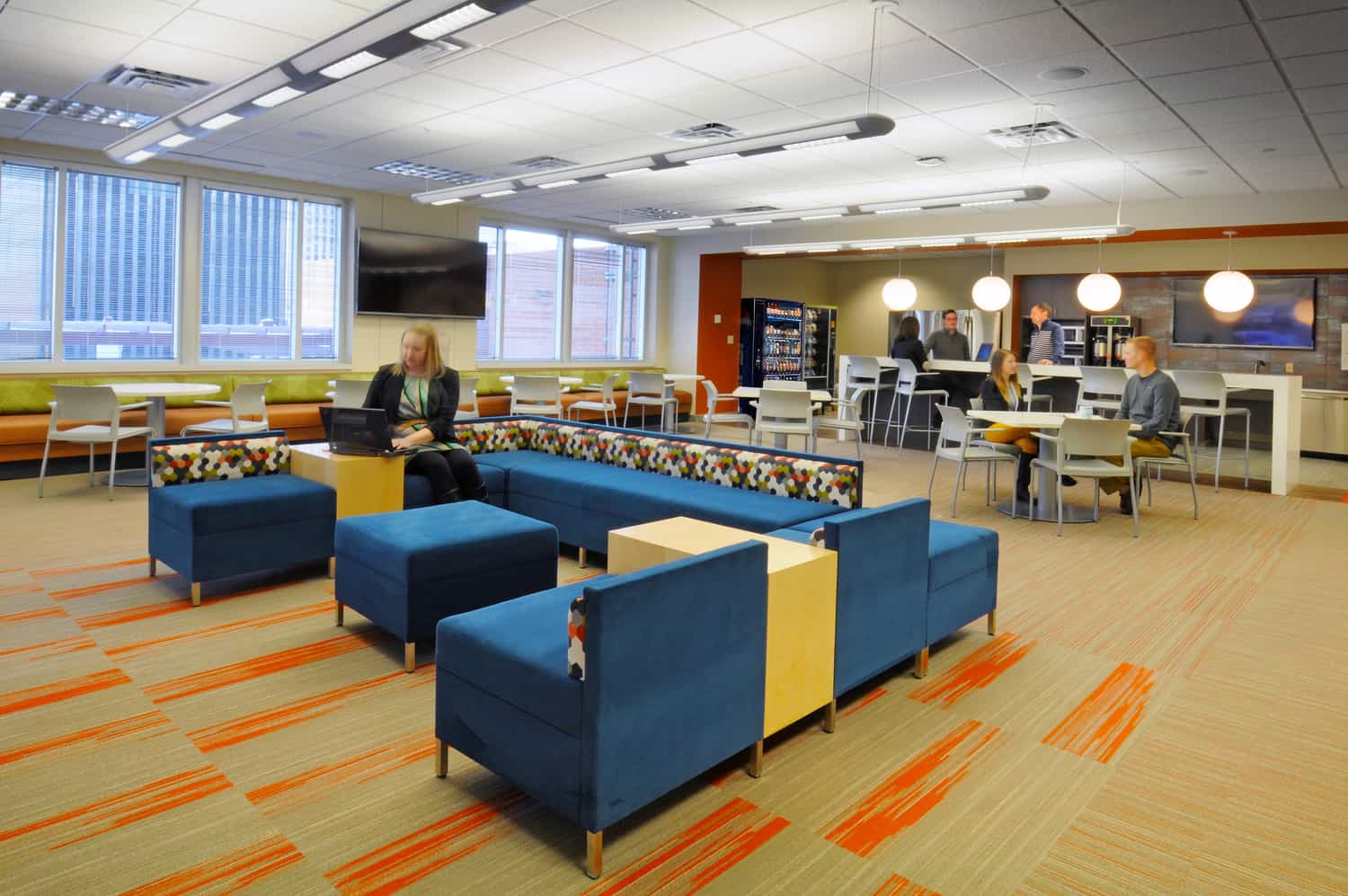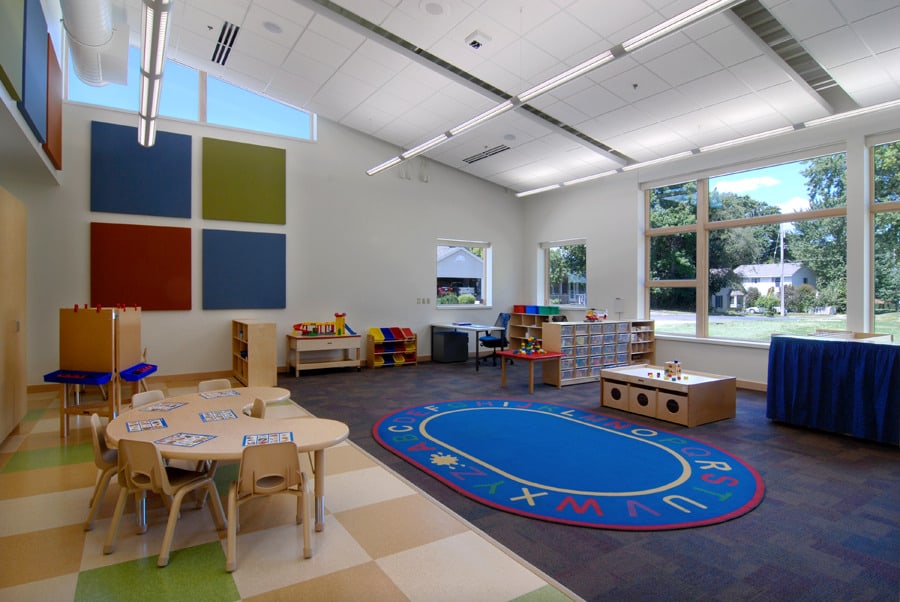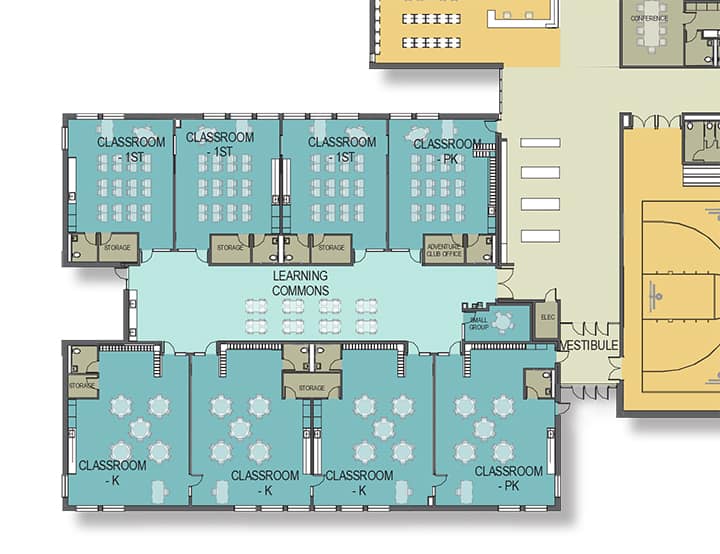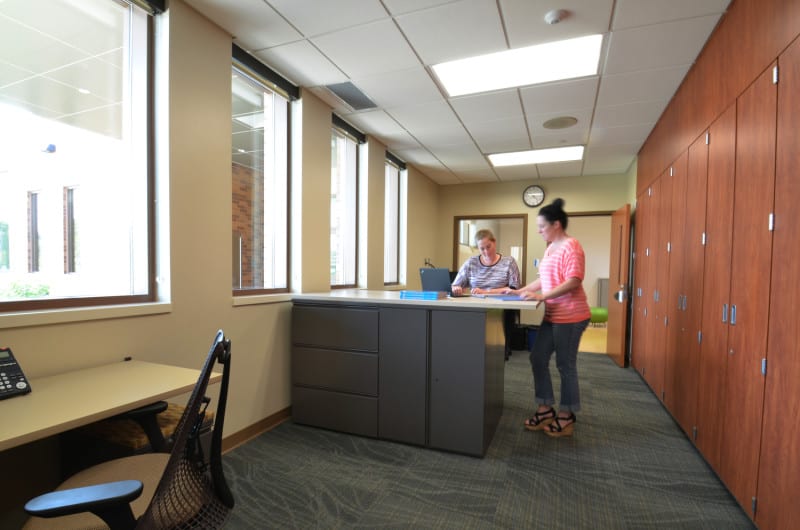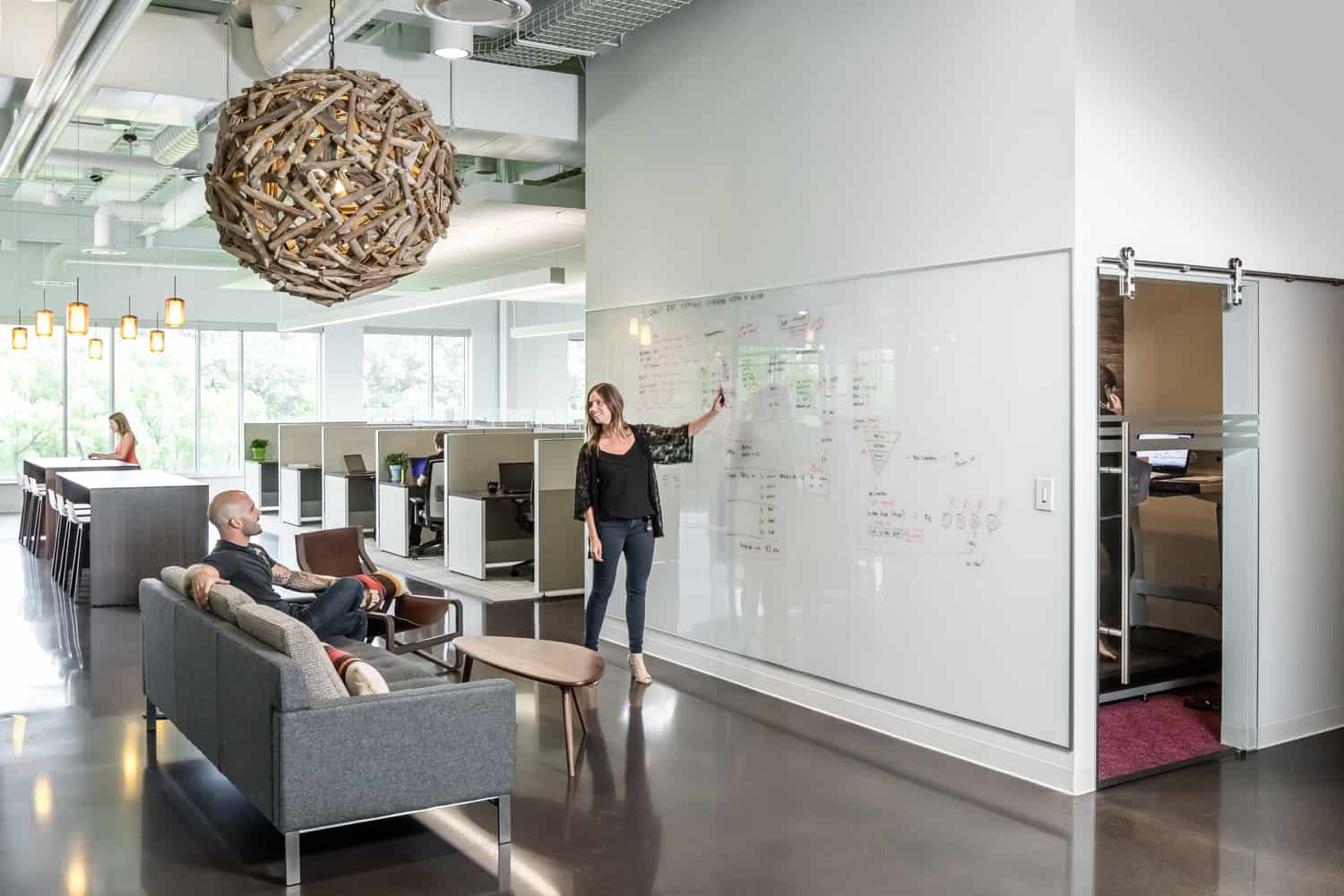Walk into a Spyhouse Coffee in Minneapolis, and there is more going on than just good coffee – a group of people meeting, a few professionals and students working on their laptops, and a couple of tables of two people discussing business and life.
Make no mistake, the coffee is good. So is the atmosphere, though – friendly, rustic, comfortable. And, what Spyhouse creates in its settings, it receives in the energy these people bring. It becomes more than a coffee shop; it becomes a hub of work, study, and activity.
And there’s the competition for most offices today. In what someone called “the modern workplace in a borderless world,” today’s employees are looking for more than office amenities. They are looking to be engaged in their work in the same way they are engaged in life. Offices aren’t disadvantaged, though, in this new working world. It just takes seeing space in a new light.
Breaking the Breakroom
Engage. It’s a word that previous offices didn’t include as a top priority. Productivity? Yes. Efficiency? Of course. Engagement?
Defined as “the extent to which employees commit to something or someone in their organization, how hard they work, how long they state as a result of that commitment,” employee engagement is receiving more attention. Although some see it as a retention strategy, it has a direct impact on productivity and innovation.
Especially in a mobile world, a significant reason employees come into the office at all is for interaction, whether formal or informal. Even in social conversations, employees are sharing ideas that can spur creativity and lead to discoveries.
Look around the office and ask, “Where is the energy center? Where do people congregate, socialize, and share?”
The challenge for many offices is that the space that could most accommodate such interaction often is overlooked, such as a break room. Often the place where people go to get away, or the only place in the office where people can casually talk innovation and creativity, such rooms can be the least attractive part of the office – the place where the vending machine lives with some non-descript tables, chairs, and microwave. Hardly inviting even for a break, it’s less inviting as a place to work, talk, or relax, sending many employees out of the office at times when they could connect with colleagues.
A Hub for Activity
When employees leave the office to work, they take with them more than their laptops. They take institutional knowledge. They take mentoring opportunities. They take the energy and culture that makes most businesses competitive and unique. Employees may be equally as productive at the coffee shop as at their desk, but offices lose something when these employees take their skills out of the office.
Fostering an environment for interaction is good for business, and part of that is having a place for employees to interact. By creating a work cafe or a central hub in the office, businesses create the in-person opportunities for informal interactions that lead to collaborative and trustworthy relationships.
As research has indicated, technology is unable to replicate such casual interactions, whether social or business. Through face-to-face communication, the research found, team cohesion is enhanced and group performance increases. By seeing space as a tool to shape these personal and natural interactions, offices can improve the productivity and innovation across the company.
Brewing Up Culture
It’s been said in many iterations: “Culture eats strategy for breakfast.” As Anytime Fitness’ CEO Chuck Runyon explains, it is what creates team cohesion, which improves performance. It also leads to tattoos of the company’s logo…by customers as well as employees. Few companies can claim such brand loyalty.
Culture goes beyond branding, though. Culture inspires. It energizes. It motivates. Culture is what brings many employees into the office, as the office is no longer the only place where individual work can be done. Employees today, especially new recruits, are looking for more than a desk and compensation. They want connection to leadership, connection to mentoring opportunities, and connection to mission.
This is where space can be the catalyst for building and enhancing culture. Work cafes, collaboration hubs, work islands, and even work benches eliminate walls that can isolate individuals at a desk and open spaces for more interactions that are necessary for building social skills needed for effective teamwork. Such spaces also allow for formal and informal learning opportunities, connecting seasoned employees with new recruits. Most importantly, it engages employees, building trust, awareness, and a shared sense of purpose.
Not everyone who walks into a coffee shop with a laptop is looking for a discussion, but they are looking to work in a place where they can see as well as be seen. They are looking to be energized by something more than caffeine. By seeing their own space through this lens, companies create face-time opportunities that build energy and culture in the workplace and makes the office an attractive space where people want to work.
A version of this column originally appeared in The Business Journal’s How-To section of its newspapers’ website in November 2016 as part of an occasional series about design written by Jennifer Stukenberg.


